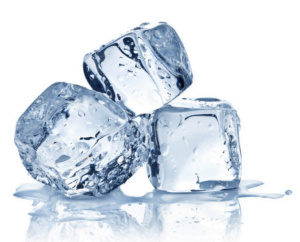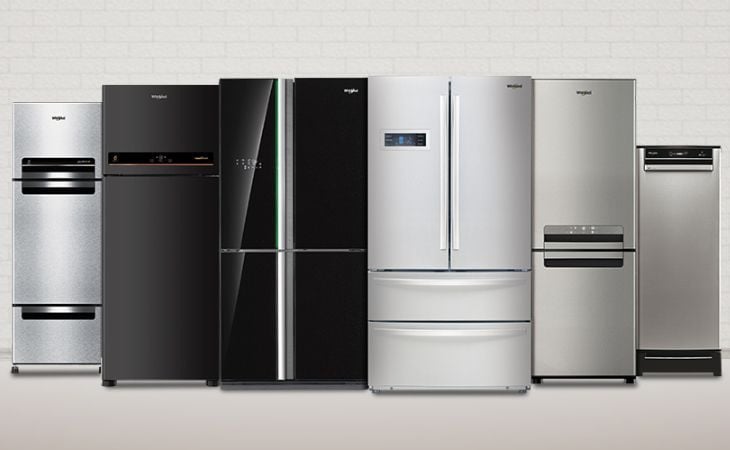How Does a Refrigerator Work? | A Complete Guide
“How does a refrigerator work?” is often a question one would ask yourself out of curiosity. “Where does the chill of a fridge come from?” or “What exactly is a gas compressor?” you would think and wonder. This guide here will help you understand the cyclical nature that all refrigerators and freezers go through to […]

Refrigerator Function: How Does a Refrigerator Work?

The Refrigeration Cycle: Step-by-Step
infographic 1 The refrigeration cycle or the vapor compression system begins with a fluid called refrigerant and is generalized as the following steps.- Refrigerant Compressed: The cooling process begins in the processor as refrigerant vapor or cool gas is drawn into the compressor. While in the compressor, the vapor is compressed and sent out into higher temperature and pressure, the compressed gas now being hot.
- Hot Air Pushed Out: As the compressor pushes the vapor into the condenser coils outside the refrigerator via high pressure, the compressor exchanges heat with the room’s cold air. The warmed refrigerant gas is a byproduct of the refrigerator. This is then exhausted by the vents from the back of the fridge.
- Refrigerant Becomes a Liquid: The hot gas from the condenser coils meets with the cooler air temperature in the kitchen, producing a liquid refrigerant.
- Refrigerant Flows Into Evaporator Coils: The high-pressure or compressed fluid refrigerant is compressed as it enters the evaporator coils inside most refrigerators through the expansion valve.
- Heat Is Absorbed: The refrigerant liquid absorbs heat inside the fridge, cooling the air along with the insides of the refrigerator at around negative 25 degrees Fahrenheit. The refrigerant evaporates into a cold gas and flows in.
- Refrigerant Evaporates: A refrigerant gas is created from the coolant liquid’s evaporation and flows back into the compressor.
- Cycle Repeats: The refrigeration cycle is sealed as the refrigerant gas is led back to the compressor, beginning anew whenever you power up the machine. This repetition keeps the refrigerator in a constant loop of cold air as the cycle begins again continuously as long as there’s electricity.
Why Does Cooling Take Time?

Source: clearwaycommunitysolar The cooling process would take time due to thermodynamics, wherein you can’t create energy out of anything and would need energy from other forms. This fact goes against the idea of cooling your kitchen with the refrigerator door open. A refrigerator takes heat away from the chiller cabinet with the cooling liquid. This results in the liquid being pumped outside the cabinet and releasing heat in equal amounts as what went in. The cycle repeats with fluid back to the compressor and heated air. Following the law of energy conversion, it takes so long to cool or freeze food as they contain a lot of water. A small amount contains a lot of molecules, whose energy depends on whether they’re hot or cold Hence, it would take a couple of minutes to either heat or cool water as there needs to be energy to remove or create heat — so it’s not that your freezer or refrigerators are weak. The amount of energy needed to change water to a higher temperature would need 4200 joules for every kilogram per degree at their specific heat capacity. A refrigerator’s freezer can remove heat at 100 watts or 100 joules per second, meaning it would take 42 seconds to cool water. The same principle applies to food too.
Why Is Electricity Needed for Refrigerators?
 A refrigerator works through electricity and the second law of thermodynamics — which states that heat always moves faster from hotter to colder regions.
All the while, energy or the flow of heat would never move in the opposite direction, unless through a powerful external force.
Fridges transfer heat from colder regions to hotter ones.
As such, this heat flow would require electricity to eventually cool the fridge’s contents, so the internal temperature remains cold compared to the surroundings.
Also, gasses heat up when compressed and cool down as they expand, such as with a warm bicycle pump on a tire or how cool perfume feels when applied.
The US Energy Information Administration states that refrigerators and other in-home appliances use 7% of all domestic electricity — the same as television but half as air conditioning, which is 17%.
All the applications also follow the same working principle all refrigerators do.
A refrigerator works through electricity and the second law of thermodynamics — which states that heat always moves faster from hotter to colder regions.
All the while, energy or the flow of heat would never move in the opposite direction, unless through a powerful external force.
Fridges transfer heat from colder regions to hotter ones.
As such, this heat flow would require electricity to eventually cool the fridge’s contents, so the internal temperature remains cold compared to the surroundings.
Also, gasses heat up when compressed and cool down as they expand, such as with a warm bicycle pump on a tire or how cool perfume feels when applied.
The US Energy Information Administration states that refrigerators and other in-home appliances use 7% of all domestic electricity — the same as television but half as air conditioning, which is 17%.
All the applications also follow the same working principle all refrigerators do.
What Are the Different Parts of a Refrigerator?
Infographic 2 The best kind of refrigerator and the best kind of mini-freezer would have the following high-quality parts in high-quality. Together, these create the right mechanical refrigeration and chemical reactions:Thermal Expansion Valve
The thermal expansion valve or flow control device controls the flow of liquid refrigerant or coolant into the evaporator coils inside the machine. The mechanism is small and just as sensitive to temperature changes within a refrigerant.Compressor
A compressor has a motor that sucks up the coolant in the evaporator and then compresses it into a cylinder to make high-pressure gas. The compressor is the beginning and the end of the cycle. It maintains the refrigerator’s cold temperature as the compressor starts and renews the cycle by sucking in gas to compress.Evaporator
This machine consists of multiple tubes with fin sets made of highly thermal conductive metals to remove heat inside. After absorbing heat, it’s blown through a fan. This heat exchanges partially absorbed heat from items inside the fridge as it cools the gaseous refrigerant, and the liquid turns into refrigerant vapor.Condenser
The condenser consists of externally finned tubes found at the back of the fridge as the cycle helps the liquefaction of the gaseous refrigerant by absorbing heat and expelling it outside. The condenser coils or thin radiator pipes remove the heat of refrigerant gas. As the temperature drops, the cool vapor condenses back into liquid form, acting as a heat exchanger.Capillary Tube
A capillary tube is one of the most simple refrigerant meters used not only on a refrigerator but also in air-conditioning despite only being coiled copper. It works because whenever the refrigerant leaves, the condenser enters the small hole of the capillary, and the higher pressure drops are guided into the evaporator to turn into gas. In a sense, the capillary acts as a pipe.Refrigerants
Also known as coolant, this liquid pushes the cycle into its loops. It’s also a chemical that develops, alternating between states as hot gas and cool liquid. During the 20th century, fluorocarbons, CFCS, and other gases such as propane and carbon dioxide were counted as refrigerants. However, nowadays, they are replaced by more environmentally friendly refrigerants, ammonia, R-290, R-600A, etc.The History of Refrigerators

Source: lovetoknow Now that you understand how a refrigerator works, you should also understand the steps that lead to the earliest form of refrigerator technology in food preservation.
Cooling Before Refrigerators
Before electricity and modern refrigerators, people used anything with colder temperatures to preserve fresh food — such as using cold water from local rivers and lakes. The alternative would have been storing the food within basements, cellars, or pits, and ice boxes filled with ice or snow with straw, seaweed, or sawdust. Iceboxes resembling modern fridges were especially popular during the 19th century. These were made of insulated metal or wood with a tray or compartment. The tray or compartment was meant to hold ice blocks to chill the whole apparatus, with the ice blocks delivered to each house with an icebox.The Invention of Refrigerators
The invention of the modern fridges led to the Scottish physician William Cullen having an idea regarding the cooling effect in 1748. Cullen realized that the aftermath of liquid becoming gas or vapor left a cooling byproduct, but the physician did nothing with his discovery. However, in 1834, American engineer and physicist Jacob Perkings invented the first vapor compression system, wherein a fluid is compressed and expanded by differing pressure. This process was done within a cycle that Perkins further systematized, leading the American to be known as the Father of the Refrigerator. The refrigerator was further refined by American physicist Fred W. Wolf in 1913. He created the first one powered by electricity with a refrigeration unit on top of an icebox. Later, William C. Durant created the first home fridge with a compressor unit. This was mass-produced in 1918 and was put to use in more industries of the 20th centuryTypes of Refrigerators

Source: pinterest.com Although there is a great variety of fridges, most still follow the same inner workings and closed cooling cycle system. Most refrigerators nowadays have a frozen storage space or a freezer compartment, following a similar freezing cyclic process. Their presence and location divide fridges into various types. These types of refrigerators include:
- Top-freezer fridges
- Side-by-side fridges
- Bottom-freezer fridges
- French door fridges
- Counter-depth fridges
- Mini-fridges
Refrigerator Working FAQs
Although you now know how the refrigeration cycle works, there are still things you would need to know to keep your refrigerator working and how the cycle helps.
The ideal temperature for a typical refrigerator would be around the low temperature of 35-38 degrees Fahrenheit to keep more forms of food fresh.
Frost forms in your refrigerator due to how water vapor hits the cold coils.
The vapor first condenses into cold water, and as it makes contact with the coils, it freezes into a layer of frost.
If the go-to answer of baking soda fails, a method requiring a more hands-on approach may be necessary.
You can also check how to clean out your refrigerator in online communities and other articles. For one, it might even be due to your water filter.
You can also call a professional should the problem remain, since the stench may have penetrated the insulation.
If you’d like to try to get rid of the odor yourself, here’s what you can do:
- Remove all items.
- Throw away any spoiled foods and check especially any canned food and liquid.
- Clean and remove any detachable glass attachments
- Wash the door gasket with a mild detergent and rinse thoroughly.
- In the event of stubborn odors, you can spread boxes of baking soda onto cookie sheets at the top and bottom of the fridge.
The back of your fridge and all the external refrigeration coils are painted black because the color absorbs heat very well and radiates them off.
Yes, you can recycle your old refrigerator as a common fridge is made of 95% recyclable materials.

